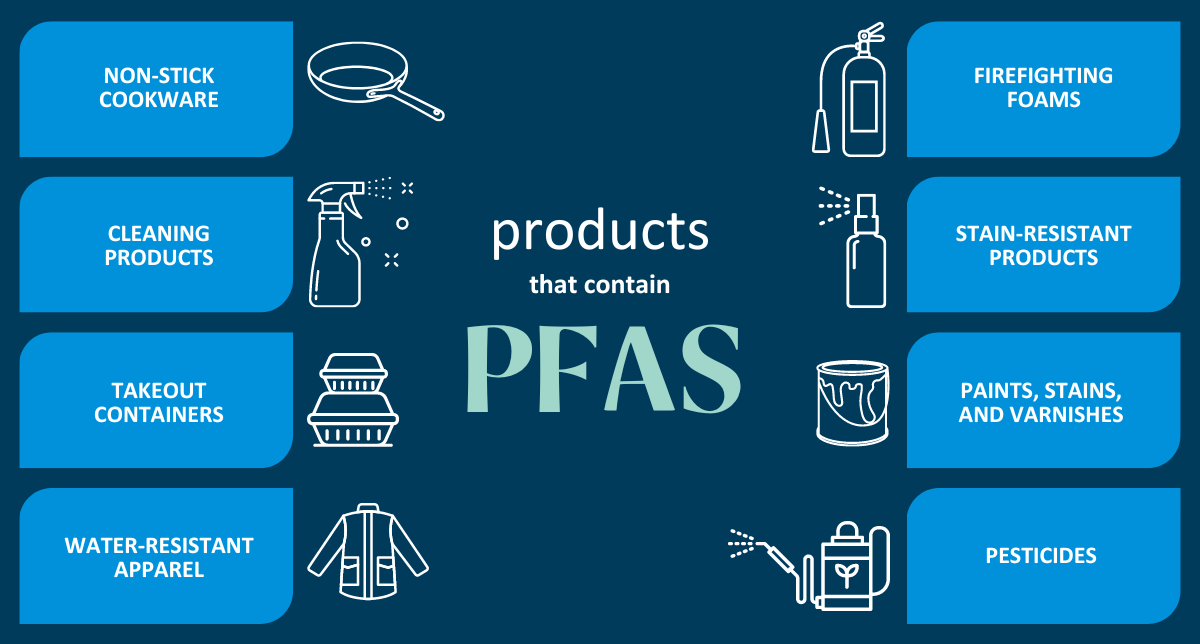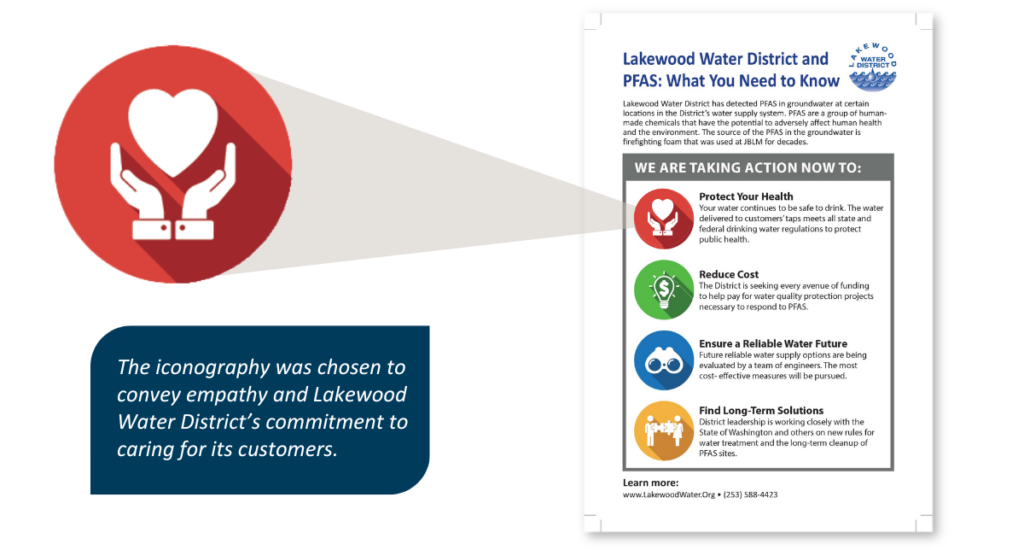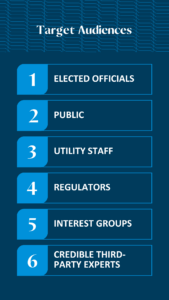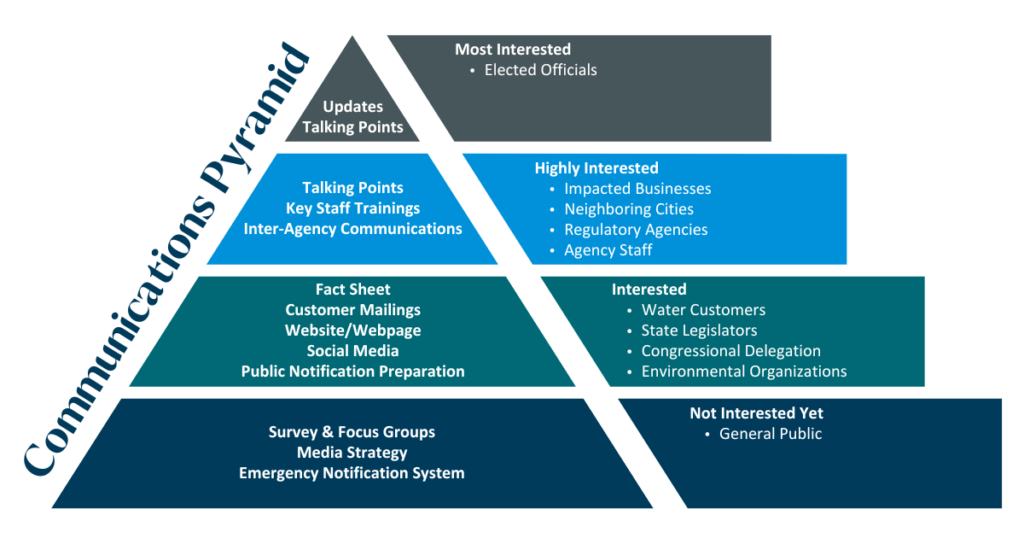
A People-Centered Approach to Communicating About PFAS
Clean water is fundamental to the public health, environment, and economy of all communities. However, the increasing detection of contaminants like PFAS (per- and polyfluoroalkyl substances) in water sources has raised concerns about the safety and quality of this essential resource.
PFAS, a group of human-made chemicals used in various industrial and everyday consumer products, have become a pressing issue due to their persistence in the environment and health risks. As communities become more aware of the presence of these substances in their water, public agencies are faced with the challenge of responding effectively to protect public health while maintaining trust and transparency. In this context, communication is key.

EPA Response to PFAS
The United States Environmental Protection Agency (EPA) has taken important steps in response to the PFAS issue to protect public health. On April 10, 2024, EPA announced the final National Primary Drinking Water Regulation (NPDWR) for six PFAS. Other efforts include providing access to funding for states and territories for PFAS testing and treatment at public water systems, as well as help for private well owners.
The final rule requires public water systems to:
- Monitor for PFAS and provide information to the public beginning in 2027.
- Implement solutions to reduce PFAS if levels exceed the standards by 2029.
- Take action to reduce the levels and provide notification of the violation to the public if the system violates the standard after 2029.
Watch “What EPA is doing about PFAS?” to learn more about all the ways the EPA is working to address PFAS.
Public Perception
Water quality concerns are now a top-of-mind issue. Chapman University’s 2023 “Top 10 Fears in America” shows 50% of respondents are afraid of the pollution of drinking water. American Water Works Association’s (AWWA) 2024 Public Perception of Tap Water Survey shows a 9% drop in adults reporting water from their faucets is safe (from 81% in June 2020 to 72% in May 2024).
Along with the EPA and state regulatory agencies, utilities have an important role in proactively communicating to the community to address these concerns. And there is good news—AWWA’s 2024 survey shows that, although some customers are worried about tap water, 74% of respondents say they trust water utilities “a lot” or “some” for information about water, along with scientists at 68%. Survey results also showed an increase in trust from respondents who received recent communication besides a bill from their water utility and/or were made aware of water testing. That is a good position from which a utility can launch a conversation about PFAS or other contaminants.
Communication Approach
For decades, Consor has been a trusted partner and advisor in strategic planning, communications, facilitation, and community engagement services. Our strategic planning and communications team has a proven track record of working alongside technical staff to bring diverse groups together and build long-term support for water utilities. We have developed and implemented communication programs for water quality issues and large public works projects, such as the Willamette Water Supply Program, as well as helped secure funding through initiatives like WIFIA. Our work helping utilities communicate water quality issues with the public is based on our deep understanding of drinking water and how to effectively engage the public.
Maintaining and Building Trust
In addressing PFAS concerns, our team understands the first step is to maintain and build trust by acknowledging the community’s worries and showing genuine empathy. This involves openly communicating that the agency understands the gravity of the situation and is deeply committed to safeguarding public health. Building trust through this initial communication is crucial—as AWWA’s 2024 Public Perceptions of Tap Water Survey shows, you can increase trust by communicating with your customers beyond just the water bill. We helped Lakewood Water District communicate to customers their commitment to protecting public health in their outreach materials, as seen below.


Engage Target Audiences
To effectively communicate, it is important to identify your key audience and what information they need to feel informed about the PFAS situation and understand that concrete actions are being taken to address the issue.
- Keep elected officials informed on the topic and actions underway, as they play a key role in communicating with the public.
- Actively share information with the public about the situation and the steps the utility is taking, while also showing empathy for their concerns. It’s critical that utilities use multiple communication channels to reach all members, especially underrepresented communities.
- Educate utility staff, who are on the frontline with customers, about PFAS and the actions being taken. They should be trained on how to speak with customers.
- Get involved with regulators dealing with PFAS issues and advocate for the utility and community. Now is also the time to prepare for public notice requirements.
- Reach out proactively to interest groups that may have interest in PFAS. Share with them the actions the utility is taking and get their feedback on solutions.
- Engage credible third-party experts to help tell the utility’s story. Research shows that the public has trust in these experts.
Meaningful Engagement
Our expertise in fostering meaningful community engagement helps us create clear, empathetic, and action-oriented messaging and materials that help utilities reach their key stakeholders. Sharing updates on ongoing studies, efforts to secure funding, and initiatives aimed at identifying and mitigating contamination sources reassures stakeholders that the situation is being managed by trusted experts. For Airway Heights, our team developed a Safe & Reliable Drinking Water Strategic Communications Plan with outreach methods tied to their most important stakeholders. A communications pyramid, illustrated below, ties outreach methods to stakeholder groups.

By adopting this people-centered approach, public agencies can build trust, manage risks, and foster a collaborative relationship with the communities they serve. This method keeps the public informed, reassured, and engaged as efforts to address PFAS contamination move forward.
Lasting Benefits
Trust built through the People-Centered Approach has lasting benefits. The community’s support today will extend to future issues and projects, creating a foundation for ongoing collaboration. This perspective helps the public see the agency as a long-term partner in supporting the well-being of their environment and health.
By consistently communicating with the public, utilities can effectively build and maintain trust, which enables better decision-making, optimizes funding opportunities, and secures continued support for future initiatives.

